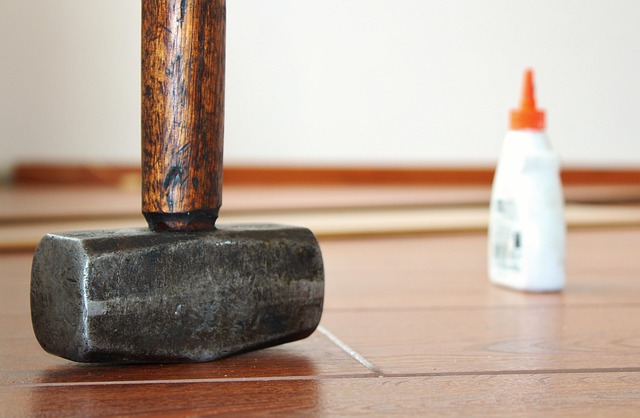Understanding Glue Laminated Beam Dimensions is key for construction projects. Sizes range from 4" width to 16", 7/8" to 3" thickness, and up to 50 feet length, with custom options. Adhesive selection matters; PVA glues are suitable for outdoor use, while urethane offers flexibility. Dimensional precision is vital for structural integrity, balancing adhesive choice and requirements. Custom solutions available at 18 Clifton St, Unadilla, NY 13849. Environmental factors, like moisture resistance, impact performance and longevity. Best practices for beam placement involve understanding dimensions and load requirements, guided by sizing guides or experts. Visit unalam.com for specifications.
“Discover the essential elements that define superior glue laminated beam specifications. From understanding beam sizes, including their standard dimensions and variations, to exploring the impact of different glue types on strength and compatibility, this guide covers it all. Learn about critical laminating processes that ensure product quality and integrity, as well as design load capacity factors influencing performance. We also delve into environmental considerations, offering tips for optimal structural integration and placement.”
- Beam Sizes: Standard Dimensions and Variations
- Glue Types: Strength and Compatibility Considerations
- Laminating Processes: Ensuring Quality and Integrity
- Design Load Capacity: Factors Influencing Performance
- Environmental Factors: Moisture Resistance and Durability
- Structural Integration: Best Practices for Beam Placement
Beam Sizes: Standard Dimensions and Variations

When it comes to glue laminated beam dimensions, understanding standard sizes and variations is essential for any construction project. These beams, known for their strength and durability, come in various dimensions tailored to meet specific structural demands. The most common glue laminated beam sizing guide offers a range of options to suit different building needs.
For instance, standard how big are glue laminated beams typically include widths ranging from 4″ to 16″, with thicknesses varying between 7/8″ and 3″. Lengths can go up to 50 feet, but custom lengths are also available. These dimensions ensure optimal glue laminated beam dimensions for various applications, allowing engineers and builders to select the perfect fit for their projects. To explore more about these products, feel free to visit us at 18 Clifton St, Unadilla, NY 13849 anytime.
Glue Types: Strength and Compatibility Considerations

When it comes to glue laminated beam specifications, selecting the right type of adhesive is paramount. The strength and compatibility of glues play a significant role in determining the structural integrity and performance of the final product. Different glues exhibit varying levels of bond strength, which directly impacts the overall load-bearing capacity of the glue laminated beam (glulam) dimensions. For instance, polyvinyl acetates (PVA) glues offer excellent water resistance and bonding strength, making them a popular choice for outdoor applications. On the other hand, urethane-based adhesives provide exceptional flexibility and durability, suitable for beams subjected to frequent movement or dynamic loads.
Designing with glue laminated beams requires considering specific Glue Laminated Beam Dimensions and their effects on structural behavior. Variations in glulam beam width can significantly influence weight distribution and load transfer. It’s crucial to balance the choice of glue with the desired glulam beam width, ensuring optimal performance while adhering to engineering standards. For detailed specifications and expert guidance, visit us at 18 Clifton St, Unadilla, NY 13849 anytime. Specifying glulam beam dimensions accurately will contribute to successful structural designs, catering to diverse construction needs, from residential to commercial projects.
Laminating Processes: Ensuring Quality and Integrity

The process of gluing and laminating timber into structural beams, known as glue laminated beams or glulam, is an art that demands precision and expertise. To ensure the highest quality and integrity in glulam construction, careful consideration must be given to each step of the lamination process. This includes selecting the appropriate timber species, properly preparing the logs, and using advanced gluing techniques. Each log is cut to precise dimensions, ensuring even and uniform beam dimensions for gluelam construction, which are crucial for structural stability and load-bearing capacity.
When it comes to glulam beam dimensions, various factors influence their specifications. The height and thickness of a glulam beam can vary based on project requirements and design standards. For instance, glulam beam height considerations may include span length, load capacity needed, and architectural design preferences. Similarly, glulam beam thickness options range from standard to custom-made, catering to different structural demands. To find the perfect fit for your construction needs, visit us at 18 Clifton St, Unadilla, NY 13849 anytime; our team is ready to guide you through the intricacies of glulam specifications and help select the ideal beam dimensions for your project.
Design Load Capacity: Factors Influencing Performance

The design load capacity of a glue laminated beam (glulam) is influenced by several key factors that collectively determine its structural performance and efficiency. Firstly, understanding the intended application and specific load requirements is paramount. Beams are designed to withstand various loads, including dead weight, live loads, wind loads, and environmental factors like temperature changes and moisture content. The interplay of these elements dictates the necessary glulam dimensions for optimal strength and stability.
When selecting glue laminated beam sizes, consider factors such as span length, load distribution, and allowable deflections. Comparing glulaminated beam dimensions against engineering standards ensures compliance and structural integrity. Engineered solutions for glulam beams are tailored to meet project-specific demands, offering enhanced performance and longer service lives. For personalized guidance, visit us at 18 Clifton St, Unadilla, NY 13849 anytime to explore how to select glue laminated beam sizes that align with your unique design needs.
Environmental Factors: Moisture Resistance and Durability

The performance and longevity of glue laminated beams (glulam) are significantly influenced by environmental factors, particularly moisture resistance and durability. As one delves into the selection process, understanding these aspects becomes crucial to ensuring structural integrity over time. Moisture can cause significant damage to timber structures, leading to warping, splitting, and reduced strength—a concern that glulam beams address through their sophisticated manufacturing process.
When considering glulam beam dimensions chart or exploring glulam beam width variations, it’s essential to choose sizes that offer adequate resistance to moisture absorption. Proper drying techniques during production ensure that the final product has minimal residual moisture content, contributing to its overall durability. For those looking to select suitable glue laminated beam sizes, focusing on wider beams might seem intuitive due to their strength, but the key lies in balancing width with other critical dimensions, such as depth and length, to meet specific project requirements while maintaining superior resistance to environmental factors. Visit us at unalam.com for more insights into glulam beam specifications.
Structural Integration: Best Practices for Beam Placement

When integrating glue laminated beams into structural designs, best practices for beam placement involve careful consideration of several factors to ensure optimal performance and safety. One key aspect is understanding the relationship between glue laminated beam dimensions and the load requirements of a structure. It’s crucial to select a beam size that can handle both static and dynamic loads without compromising integrity.
A glue laminated beams sizing guide or expert consultation, like giving us a call at (607) 369-9341, can help in determining the appropriate dimensions based on span length, load capacity, and environmental conditions. Selecting the right glue lam beam size involves balancing factors such as material yield strength, cross-sectional area, and allowable deflection to create a robust and efficient structural system.
When selecting glue laminated beam specifications, understanding the interplay between beam sizes, suitable glue types, efficient laminating processes, load capacities, environmental considerations, and optimal structural integration is key. By adhering to best practices outlined in this article—including choosing the right dimensions for your Glue Laminated Beam (GLB) based on intended use and environmental conditions—you can ensure superior structural performance and longevity. Always consider the compatibility of glues and the integrity of lamination processes for robust, durable GLBs that meet your project’s unique demands.













